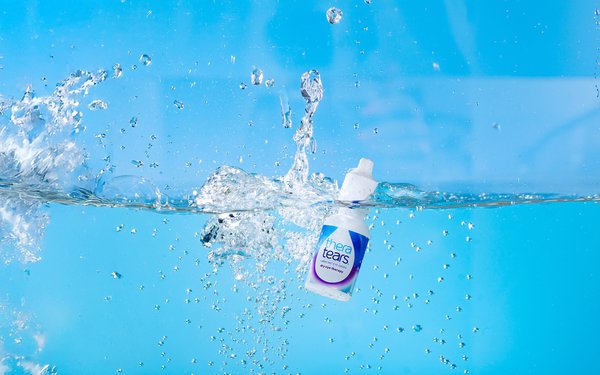
“Dry eye relief isn’t just a feeling,
it’s a science,” proclaims TheraTears in a :30 spot that's part of a watery new campaign emphasizing the brand ‘s
proprietary “blend of the five vital electrolytes found in natural tears.” Parent company Prestige Consumer Healthcare says TheraTears’ blend, dubbed OxyLytes, results in immediate,
long-lasting relief.
Campaign visuals, developed by creative agency FCB Chicago and inspired by nature photography, include depictions of water refractions, water in motion, and water
droplets.
Those images will be seen through year’s end across a range of media, such as linear TV, including CNN, Fox and MSNBC. Print ads will appear in Food Network
Magazine, Women’s Health, Good Housekeeping and Country Living, all published by Hearst. Custom digital content and roadblocks will run on WomensHealthMag.com and
GoodHousekeeping.com.
advertisement
advertisement
Online video, social media, newsletter amplification and influencer marketing are also part of the campaign, with media buying handled by The Shipyard.
“Success will likely be measured by brand awareness lift, video engagement, digital performance metrics, and sales lift,” the brand tells Marketing Daily.
TheraTears,
first sold in the mid-1990s, was acquired in 2021 by Prestige, which also markets the Clear Eyes brand of eye drops. They're part of the $1.4 billion North American OTC market (2023), which is
expected to grow 7.4% annually to $2.3 billion in 2030, reports Grand View Research, with generics being the largest and fastest growing segment in the category.
On the brand-name side, major
OTC eye drops players besides Prestige include Abbvie/Allergan’s Refresh, Alcon’s Systane, Kenvue’s Visine, and Bausch & Lomb’s Blink and Lumify.
The dry eyes
market is hot largely because of climate change, Consumer Pulse Analysis reported earlier this month, citing data from the Environmental Protection Agency and the World Health Organization.
“Elevated ambient temperatures and dry air exacerbate tear film evaporation, leading to higher consumer demand,” the researcher explained.
Other contributing factors, according to
Consumer Pulse, include increased air pollution contributing to ocular surface inflammation and irritation, as well as and pollen levels.